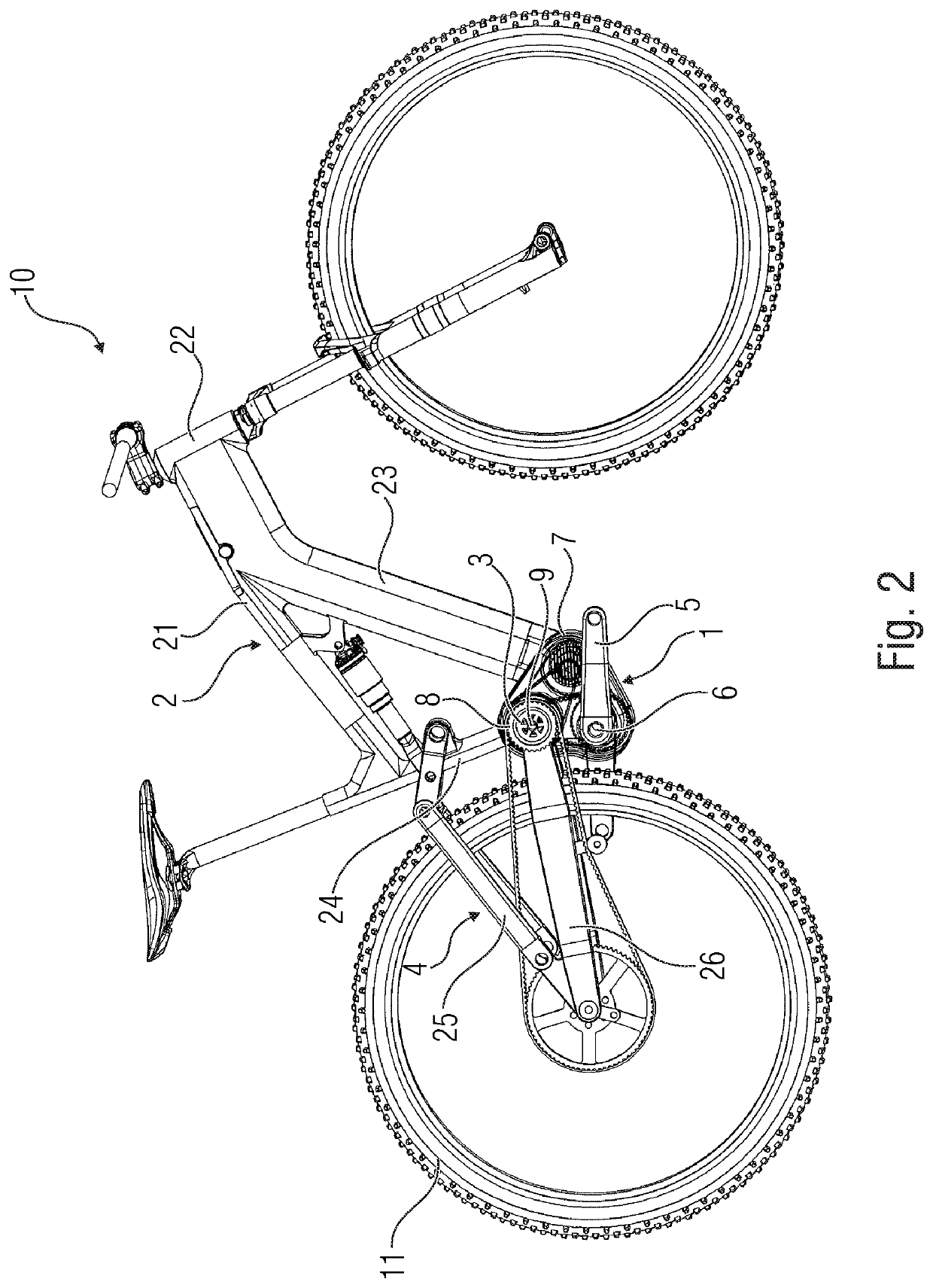Drive device for a bicycle driven by an electric motor
a technology of electric motors and drive devices, which is applied in the direction of axle suspensions, cycle equipments, vehicle transmissions, etc., can solve the problems of chain being pulled back, affecting the performance the objective conflict, so as to achieve the effect of strong decompression of the rear linkage element, increased torque, and improved torqu
- Summary
- Abstract
- Description
- Claims
- Application Information
AI Technical Summary
Benefits of technology
Problems solved by technology
Method used
Image
Examples
Embodiment Construction
[0101]So-called e-bikes are generally meant by the term bicycles driven by an electric motor. Among these types of e-bikes which, for defining the present disclosure, fall under the term bicycle driven by an electric motor, are both bicycles driven by an electric motor which may be driven exclusively by the drive force of an electric motor, and bicycles supported by an electric motor which can switch in a drive force of an electric motor in support of the pedaling force.
[0102]The shaft of the first drive, the shaft of the output element and an output shaft of the electric motor comprise a direction of extension along their longitudinal axis. A radial distance in the sense of the present disclosure relates to this longitudinal axis passing in the direction of extension of the respective shaft, which means that radial means a radial direction when starting from the longitudinal axis. The direction of extension of the longitudinal axis is usually roughly orthogonal to a vertical centra...
PUM
 Login to View More
Login to View More Abstract
Description
Claims
Application Information
 Login to View More
Login to View More - R&D
- Intellectual Property
- Life Sciences
- Materials
- Tech Scout
- Unparalleled Data Quality
- Higher Quality Content
- 60% Fewer Hallucinations
Browse by: Latest US Patents, China's latest patents, Technical Efficacy Thesaurus, Application Domain, Technology Topic, Popular Technical Reports.
© 2025 PatSnap. All rights reserved.Legal|Privacy policy|Modern Slavery Act Transparency Statement|Sitemap|About US| Contact US: help@patsnap.com



